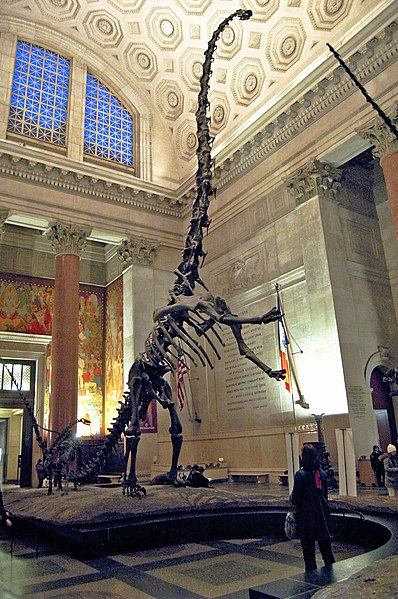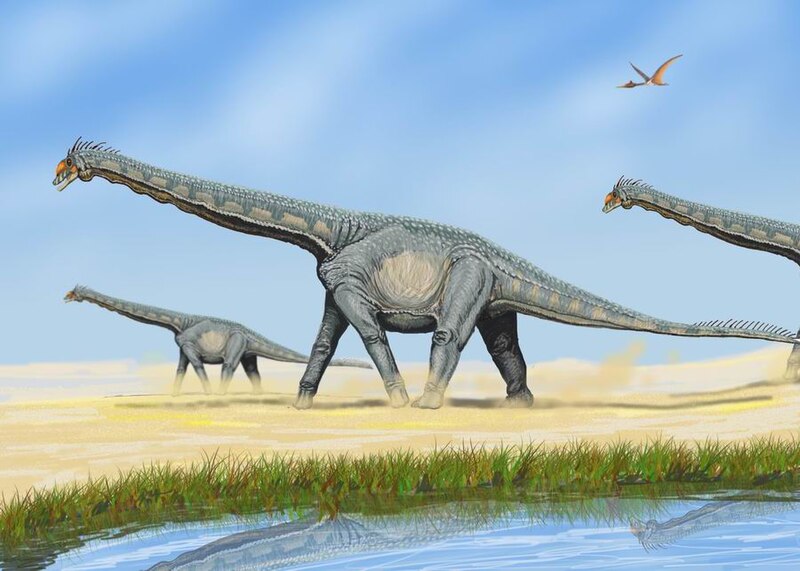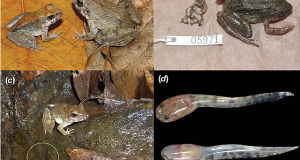 I’ve roamed the halls of NYC’s American Museum of Natural History since childhood, yet never come away without a sense of awe. This week, the museum’s newest exhibit, The World’s Largest Dinosaurs, floored me. Focusing on Sauropods such as the massive Mamechisaurus (the Brontosaurus, or “Thunder Lizard” of my youth), this ground-breaking exhibit goes beyond fossils to reveal just how these spectacular creatures moved, ate, reproduced and lived their lives.
I’ve roamed the halls of NYC’s American Museum of Natural History since childhood, yet never come away without a sense of awe. This week, the museum’s newest exhibit, The World’s Largest Dinosaurs, floored me. Focusing on Sauropods such as the massive Mamechisaurus (the Brontosaurus, or “Thunder Lizard” of my youth), this ground-breaking exhibit goes beyond fossils to reveal just how these spectacular creatures moved, ate, reproduced and lived their lives.
Dinosaurs as Living, Breathing Creatures
Until recently, most of us could view and experience dinosaurs only by examining fossils in museums. Certainly, this was more than enough to hold my attention, but there were limitations in viewing “remains” and in not being able to picture how these creatures actually went about the business of living.
Also, the fact that we know dinosaurs only as animals that became extinct leads us to believe that they were somewhat “unsuccessful experiments” that did not work out. However, as I learned from this exhibit, the Sauropods survived for over 140 million years – rendering them among the world’s most successful animals! By contrast, modern humans have been around for a mere 200,000 years, and the first members of our genus arose only 2.5 million years ago.
Beyond Fossils
The exhibit’s centerpiece is a 60-foot-long model of a Mamechisaurus. Those my age and older grew up calling this beast “Brontosaurus, the Thunder Lizard”. Though we now believe that birds, and not reptiles, are its closest relatives, the name still seems appropriate to me. The museum’s recreated Mamechisaurus sports a 30-foot-long neck topped by a tiny head and stands upon thick, 15-foot-high legs.
There are fossils, including some that you can handle, in the exhibit, but the main focus is on models that elucidate the biology and natural history of the Sauropods. Some of the models are interactive – by pulling a lever in one, you can feel the power of the huge heart that was needed to pump blood through a 90 ton body and up a 30-foot-long neck (giraffes have special valves to assist blood flow to their heads – one can only imagine the intricate workings of the Sauropod) . Recreations of internal organs can be examined, and budding paleontologists can work in a simulated fossil dig to experience the thrill of working in the field.
Unbelievable Appetites and Growth Rates
The World’s Largest Dinosaurs exhibit provides a wealth of surprising information on every aspect of Sauropod survival. I was particularly impressed by a plastic cube that holds a typical day’s food intake – 1,150 pounds of vegetation, providing an estimated 100,000 calories!
An African Elephant needs to forage for up to 18 hours a day to meet its caloric needs – so how did Mamechisaurus, 10 times the size of an elephant, find time to eat enough food to survive? Part of the answer lies in the long neck, which allowed it to gather food without wasting time and energy in walking from tree to tree. The immense creature likely also saved time by not chewing its food – leaves were apparently swallowed whole and digested via fermentation, which may have taken up to 2 weeks to complete.
 Whatever feeding strategy the Sauropods used, it worked – a young Mamechisaurus could quadruple its weight in 12 days (something it takes us 12 years to do), put on 3,500 pounds during adolescence and reach 90 tons in weight by age 23…even a “McDonald’s only” diet would not allow us to match that!
Whatever feeding strategy the Sauropods used, it worked – a young Mamechisaurus could quadruple its weight in 12 days (something it takes us 12 years to do), put on 3,500 pounds during adolescence and reach 90 tons in weight by age 23…even a “McDonald’s only” diet would not allow us to match that!
Note: The World’s Largest Dinosaurs will be at the museum from April 16, 2011 to January 2, 2012 – if ever there was a “must-see” exhibit, this is it!
Further Reading
Interesting Video of the new exhibit
The exhibit’s curators have written a book, Biology of the Sauropod Dinosaurs: Understanding the Life of Giants – sure to be a fantastic read.
Sauropods: basic facts and artists’ recreations
Barosaurus Mount image referenced from wikipedia and originally posted by Greg
Alamosaurus Mount image referenced from wikipedia and originally posted by DiBgd
 That Reptile Blog – Reptile, Amphibian and Exotic Pet Care and Information
That Reptile Blog – Reptile, Amphibian and Exotic Pet Care and Information


